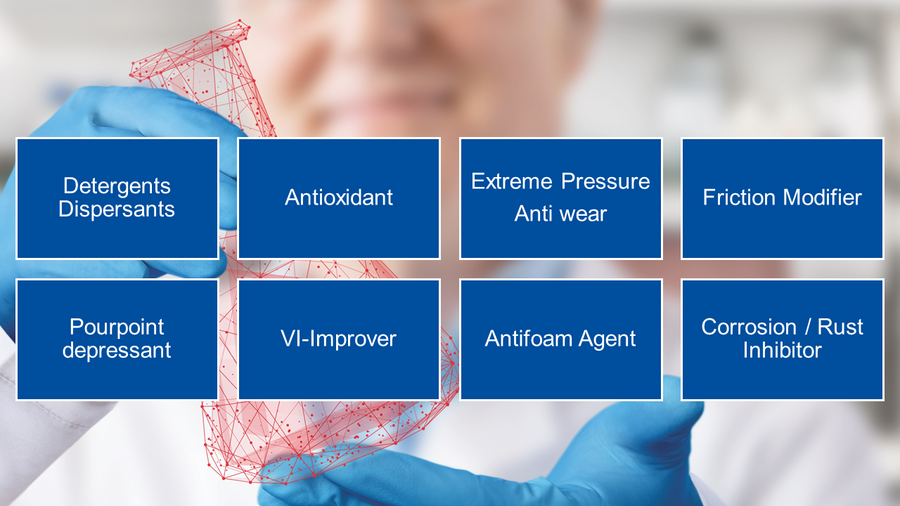Additives
Additives are used in the formulation of lubricants to improve the properties of base oils. There are many types of additives that can be used in the formulation of lubricants. The following groups of additives are the most commonly used in the automotive sector.

The main characteristics of these additives are shown below:
Detergents
Detergent additives perform several functions within lubricants:
- They protect metal surfaces so that deposits are not generated and therefore help to keep all parts working at high temperatures clean.
- They neutralize the acids produced during the combustion process and that are generated due to the sulfur content in fuels (this value can be controlled by measuring the TBN of the oil).
- They prevent the oxidation of the oil and therefore its thickening.
Dispersants
Dispersant additives prevent contaminant particles in the oil from sticking together and becoming large enough to cause serious problems. These additives keep the particles in suspension in the oil, preventing them from depositing on metal surfaces or on filters.
Antioxidants
The main function of antioxidant additives is to prevent and delay the oxidation of the oil for as long as possible in order to extend its useful life. The oxidation of lubricants causes the formation of acids, sludge and varnishes, thickens the oil and little by little the decomposition of the lubricant.
Extreme Pressure and Antiwear
Antiwear and Extreme Pressure additives chemically react with metal surfaces to form a protective film that prevents friction and prevents metal-to-metal contact as well as possible welds or wear on metal materials.
Friction Modifiers
Friction modifier additives modify the slipperiness of lubricants between moving surfaces to make it flow more easily. This improvement can bring benefits such as better fuel economy and therefore reduced emissions.
Pour point depressants
Mineral oils contain waxes that precipitate at low temperatures forming interlocking crystal networks. Pour point depressants are polymers that interact with these waxes as they precipitate to delay crystal formation or change the shape of the crystals. These additives allow lubricants to flow at low temperatures.
Viscosity index improvers
Base oils with a low viscosity index rapidly decrease their viscosity when increasing temperature (as happens when honey is heated), not allowing them to work in various temperature ranges. Viscosity index improvers reduce this change, allowing the lubricant to work at different temperature ranges without losing its viscosity.
Antifoaming agents
Antifoam additives prevent foaming in lubricants. They eliminate foam / air bubbles that can form in the oil and reduce aeration. It is important that a lubricant does not foam, since foam is made up of air bubbles and air is a very poor lubricant. On the other hand, when bubbles burst they generate heat, so a large amount of foam with bubbles exploding near metal surfaces can cause cavitation wear.
Corrosion and rust inhibitors
Corrosion is the surface damage that is generated in non-ferrous metallic materials and their alloys by the attack of acidic substances or chemically reactive elements, while rust is the superficial damage that is generated in ferrous surfaces and their alloys by the attack of water or oxygen Rust and corrosion inhibitor additives prevent and reduce corrosion and rust by neutralizing acidic products and rendering them harmless.
